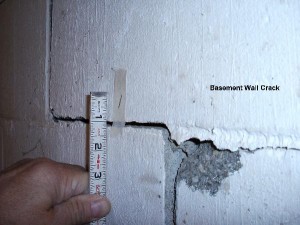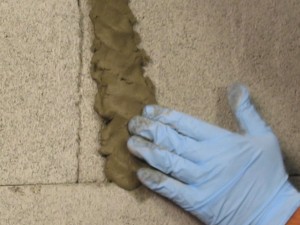 Whenever you find a leak in your basement wall, its a serious issue that will lead to major problems if not repaired. Not only will the dampness damage any possessions of yours, but the standing or leaking water is also a health hazard. Taking the time to fix the leak early on means the job will be easier and less expensive.
Whenever you find a leak in your basement wall, its a serious issue that will lead to major problems if not repaired. Not only will the dampness damage any possessions of yours, but the standing or leaking water is also a health hazard. Taking the time to fix the leak early on means the job will be easier and less expensive.
The first step to take is to locate the leak. The source of a leak is not necessarily the same place you may have found water. Trace the water back until you find a point where it emerges from the wall. Be thorough, because there is often more than one entry point. Once you find the problem area, use a hammer and chisel to carefully open up any cracks or voids and inspect them for extensive damage and holes. Remember that the cracks visible on your wall are not the complete extent of the damage, so if you try to just patch over it, water will find another place to go, leaving you more problems in the future.
Once you have inspected the crack, use a small brush to get rid of any loose debris in the crack. Use a can of compressed air to clean everything up.
For this next step, put on protective equipment. Mix hydraulic cement into a bucket as per instructions on the packet. Apply the newly mixed cement into the crack, making sure  you press it in as far as possible. You can also use small pieces of stone or even hardened cement to help fill the gap. For best results you need to use the hydraulic cement within 10-15 minutes of mixing it so you need to work quickly and thoroughly. Using a mortar trowel with this step will allow you to obtain a clean and flat finish to the wall. Finally, leave the cement to cure.
you press it in as far as possible. You can also use small pieces of stone or even hardened cement to help fill the gap. For best results you need to use the hydraulic cement within 10-15 minutes of mixing it so you need to work quickly and thoroughly. Using a mortar trowel with this step will allow you to obtain a clean and flat finish to the wall. Finally, leave the cement to cure.
Now that the crack in your wall is dealt with, you need to apply a waterproof sealant to protect against future damage. These sealant should be applied to a wet or damp wall, and will need to dry completely before applying a second coat.
After following all of our steps, your basement is repaired and waterproofed, and so you will want to make sure it stays in the best condition possible. Check around the outside of your home for gutter problems or drainage run-offs that accumulate against the side of the house. If you have a concrete slab or driveway next to your home, make sure its sloped away from the house. In fact, its recommended to have a 1 inch slope for every 10 feet of concrete slab.
